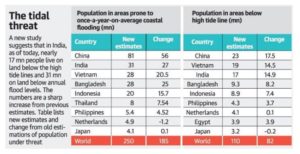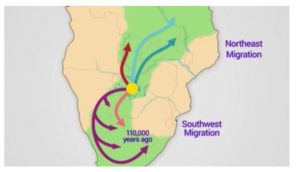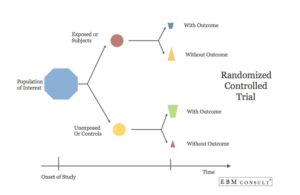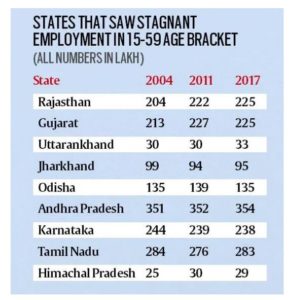IASbaba's Daily Current Affairs Analysis
IAS UPSC Prelims and Mains Exam – 30th October 2019
Archives
(PRELIMS + MAINS FOCUS)
Kudankulam Power Plant
Part of: GS Prelims and GS Mains III – Energy
In News
- Hours after a cybersecurity expert claimed on Twitter that the Kudankulam Nuclear Power Plant’s (KKNPP) domain controller-level access could have been compromised, government has categorically denied it
- Cyberattack on the unit was not possible as its systems were all standalone and forms an isolated network.
- Kudankulam and other Indian nuclear power plants, control systems were not connected to an outside cyber network and Internet
- Government revealed that a cybersecurity audit was conducted recently after a futile attempt to hack the NPCIL’s isolated network was made.
- When an Iranian nuclear power plant came under suspected cyberattack in 2012 (Stuxnet virus), Nuclear Power Corporation of India Ltd. (NPCIL) took all precautionary measures though it had already put in place an isolated network
Anti-Trust
Part of: GS Prelims and GS Mains III – Economy
In News
- The Competition Commission of India (CCI) has ordered a detailed investigation into online travel booking companies Make My Trip and Goibibo and hospitality provider OYO
- This order is based on complaints by members of the Federation of Hotel and Restaurant Associations of India (FHRAI) alleging deep-discounting, payment issues and cheating by these firms.
- CCI said there was a prima-facie case to investigate MMT-Go and OYO for alleged violation of the provisions of Section 3(4) of the Competition Act — pertaining to anti-competitive pacts and Section 4 of the Act (relating to abuse of dominant position).
Competition commission of India (CCI)
- A statutory body established under the provisions of The Competition Act, 2002.
- It consists of a Chairperson and 6 Members appointed by the Central Government.
- Its mandate is implement provisions of The Competition Act, 2002 which –
- prohibits anti-competitive agreements and abuse of dominant position by enterprises
- regulates mergers and acquisition (M&A) which can have an adverse effect on competition within India.
Flood risk
Part of: GS Prelims and GS Mains III –Disaster Management
In News
- New study has shown that in India, 36 million people would face annual flooding by 2050 and 44 million by 2100 if emissions continue to rise unabated.
- Nearly 21 million are expected to be living below the High Tide Line, the boundary that marks the farthest to which the sea reaches into the land at high tide.
- Globally nearly 110 million people live on land below the current high tide lines and 250 million on land below annual flood levels
- Current climate studies say that climate change has caused global mean sea level to rise by 11-16 cm in the 20th century and is expected to by as much as 2 m by the end of this century.
- As the tideline rises higher than the ground people call home, nations will increasingly confront questions about whether, how much, and how long coastal defences can protect them

Daily Current Affairs IAS | UPSC Prelims and Mains Exam – 30th October 2019
https://d39gegkjaqduz9.cloudfront.net/TH/2019/10/30/CNI/Chennai/TH/5_07/ffdce3b2_3288051_101_mr.jpg
Government to work on relief package for Telecom sector
Part of: GS Prelims and GS Mains III – Economy
In News
- The government has constituted a Committee of Secretaries (CoS), headed by Cabinet Secretary to work out a relief package for the telecom sector.
- This may help mitigate the impact of the more than ₹1.4 lakh crore that the telcos may need to pay the exchequer following a recent Supreme Court order.
- The Supreme Court upheld the government’s position on including revenue from non-telecommunication businesses in calculating the annual adjusted gross revenue (AGR) of telecom companies, a share of which is paid as licence and spectrum fee to the exchequer.
- Following the order, the telcos may have to pay the government ₹1.42 lakh crore within three months.
- CoS will review various demands made by the industry, including deferment of spectrum auction payment due for the next two years, reduction in spectrum usage charges and the Universal Service Obligation Fund levy.
Stress in Telecom Sector
- The industry’s debt currently stands at about ₹4 lakh crore
- The gross revenue of the industry had fallen between 2017-18 and 2018-19, the source said the price of data for the customer at an average of ₹8 per GB is perhaps the lowest in the world.
- The average revenue per user per month has declined from ₹174 in 2014-15 to ₹113 in 2018-19.
- Bharti Airtel’s liability stands at about ₹42,000 crore while Vodafone Idea may have to shell out about ₹40,000 crore
Modern Humans came from Botswana
Part of: GS Prelims and GS Mains I – History
In News
- Modern humans emerged 2,00,000 years ago in a region of northern Botswana, scientists have found.
- While it has long been known that modern humans — Homo sapiens — originated in Africa, scientists have until now been unable to pinpoint the precise location of our species’ birthplace.
- A team analysed DNA samples from 200 Khoesan people to arrive at the conclusion.

Daily Current Affairs IAS | UPSC Prelims and Mains Exam – 30th October 2019
Bhaona
Part of: GS Prelims and GS Mains I- Culture
In News
- Assamese Bhaona to make an English debut in Abu Dhabi
- Bhaona — a mythology-based theatrical performance – a 500-year old traditional Assamese art form propagated by Vaishnavite saint and reformer Sankardeva.
- It is for the first time that Bhaona would be presented in English for an international audienceto popularise the Vaishnava theatrical performance for global art connoisseurs, and familiarise them with Assamese culture and traditions
- Sankardeva needed to connect with his Assamese masses, who did not expect the divine characters of his plays to speak in the common man’s language. So he created the Brajavali, a literary language limited to theatrical usage
Do You Know?
- Sattriya is one of the eight Indian Classical dance traditions. The dance was introduced in 15th Century by a great Vaishnava Saint MahapurushShankardev in Assam.
- It was primarily a monastery dance and later on evolved as a distinctive dance form and spread across Assam.
- It has been for centuries, nurtured and preserved with great commitment by the Sattras i.e. Vaishnava maths or monasteries. Because of its religious character and association with the Sattras, this dance style has been aptly named Sattriya.
Mountain gorillas
Part of: GS Prelims and GS Mains II – Conservation
In News
- Rainforest protection and dedicated veterinarians have helped the mountain gorilla population bounce back in Volcanoes National Park, Rwanda
- Alarmed by rising rates of poaching and deforestation in central Africa, experts predicted the species could go extinct by 2000.
- Instead, a concerted and sustained conservation campaign has averted the worst and the number of mountain gorillas – a subspecies of eastern gorillas – has risen from 680 a decade ago to just over 1,000 today
- Switzerland-based International Union for Conservation of Nature changed the status of mountain gorillas from “critically endangered” to “endangered,” an improved if still-fragile designation.
- It involved “extreme conservation,” which has entailed monitoring every single gorilla in the rainforest, periodically giving them veterinary care and funding forest protection by sending money into communities that might otherwise resent not being able to convert the woods into cropland.
Do You Know?
- Gorillas share about 98% of human DNA
- Gorillas are actually languid primates that eat only plants and insects, and live in fairly stable, extended family groups.
- Their strength and chest-thumping displays are generally reserved for contests between male rivals.
(MAINS FOCUS)
ECONOMY
TOPIC: General Studies 3:
- Indian Economy and issues relating to planning, mobilization of resources, growth, development and employment.
- Inclusive growth and issues arising from it.
Randomised control trials (RCT) (Part 2)
Context:
- Three randomistas, Abhijit Banerjee, Esther Duflo and Michael Kremer, were awarded the 2019 Nobel prize in Economics for their ‘randomised control trials’ (RCT)-based studies on poverty worldwide.
- Development economics has drastically changed during the last two decades , due to the extensive use of ‘randomised control trials’ (RCT).

Daily Current Affairs IAS | UPSC Prelims and Mains Exam – 30th October 2019
Img :https://www.ebmconsult.com/content/images/Stats/Randomized%20Control%20Trial%20Deisgn.png
RCTs Evolution:
- RCTs can be traced back in the 16th century.
- The statistical foundation of RCT was developed by British statistician Sir Ronald Fisher, about 100 years ago
- In 1995, statisticians Marvin Zelen and Lee-Jen Wei illustrated a clinical trial to evaluate the hypothesis that the antiretroviral therapy AZT reduces the risk of maternal-to-infant HIV transmission.
- Drawing an inference, despite heterogeneity among the patients, was possible due to randomisation.
- RCT got its importance in clinical trials since the 1960s, currently any clinical trials without RCT were being considered almost useless.
- RCT was not applied to social sciences then .
RCTs in Social sciences:
- RCTs in Social scientists is interesting, doable, and effective.
- Nature of social science slowly converted from ‘non-experimental’ to ‘experimental’.
- Many applications of RCTs took place in social policy-making during the 1960-90s,
- The ‘randomistas’ took control of development economics since the mid-1990s.
- Nearly 1,000 RCTs were conducted by Noble laureates 2019 and their colleagues in 83 countries such as India, Kenya and Indonesia.
Case study: Finland’s Basic Income experiment
- Finland’s Basic Income experiment (2017-18), where 2,000 unemployed Finns between ages 25-58 were randomly selected across the country, and were paid €560 a month instead of basic unemployment benefits.
- Results from the first year data didn’t have any significant effect on the subjects’ employment, in comparison with the control group comprising individuals who were not selected for the experimental group
Significance:
- Randomisation makes different treatment groups comparable and also helps to estimate the error associated in the inference.
- Unless randomisation is done, most of the standard statistical analyses and inference procedures become meaningless.
- Earlier social experiments lacked randomisation and that might be one reason that statisticians such as Sir Ronald Fisher were unwilling to employ statistics in social experiments.
Criticisms:
- In order to conduct RCTs, the broader problem is being sliced into smaller ones, and any dilution of the scientific method leaves the conclusions questionable.
Connecting the dots:
- “RCT or no RCT” may not be just a policy decision to economics; it is the question of shifting the paradigm. justify
Also read: Part 1 : https://iasbaba.com/2019/10/daily-current-affairs-ias-upsc-prelims-and-mains-exam-18th-october-2019/#Randomized_controlled_trial
ECONOMY
TOPIC: General Studies 3:
- Indian Economy and issues relating to planning, mobilization of resources, growth, development and employment.
Employment in India
Context:
- Since the results of the Periodic Labour Force Survey (PLFS) 2017-18 became public — they showed that unemployment in India was at a 45-year high — there has been vigorous public debate about the true state of unemployment in the country.
What fuelled debate?
- Long delays in the availability of past employment data, even though PLFS tracks employment annually.
Highlights of survey:
- 6.1% of India’s labour force, and 17.8% of young people (15-29 years) in the labour force are unemployed.
- proportion of the workforce engaged in regular wage/salaried jobs increased by 5 percentage points between 2011-12 (when the last NSSO employment unemployment survey was conducted) and 2017-18.
- The overall workforce declined by 4 percentage points between 2011-12 and 2017-18).
- Regular workers increased only by one percentage point to 8% over the same period.
- India still lags far behind developing economies such as China (53.1%), Brazil (67.7%) and South Africa (84.8%) in the share of salaried or regular jobs.

Daily Current Affairs IAS | UPSC Prelims and Mains Exam – 30th October 2019
Img :https://images.indianexpress.com/2019/10/jobs1.jpg?w=481&h=497&imflag=true
Economic Advisory Council to the Prime Minister (EAC-PM)suggested :
- Instead of focusing on unemployment, it focuses only on the “employment” data.
- It does so by looking at three comparable surveys conducted by the National Sample Survey Organisation (NSSO) — the Employment-Unemployment Surveys (EUS) of 2004-05 and 2011-12, and the PLFS of 2017-18.
Mapping of Unemployment:
The NSSO surveys divide the entire population into three categories.
Category 1 consists of people who were involved in economic activity (or work) during the reference period of the survey. These individuals are labelled as “Employed” — and Category 1 can be subdivided into categories such as self-employed, salaried employees, and casual labourers.
Category 2 consists of people who were not engaged in any economic activity during the reference period of the survey, but were looking for work if work was available. These individuals are labelled as “Unemployed”.
Category 3 constitutes people who are neither engaged in work nor available for it. This category — labelled as “Not in the labour force” — would have a large number of people, including those who have retired, those studying, those unable to work due to disability, and those attending “only” to domestic duties.

Img: https://images.indianexpress.com/2019/10/jobs-2.jpg?w=546&h=572&imflag=true
Connecting the dots:
- Has the rise of the organised sector led to an increase in contractual employment? Analyse
(TEST YOUR KNOWLEDGE)
Model questions: (You can now post your answers in comment section)
Note:
- Featured Comments and comments Up-voted by IASbaba are the “correct answers”.
- IASbaba App users – Team IASbaba will provide correct answers in comment section. Kindly refer to it and update your answers.
Q.1)Bhaona, an India performing art is predominant in which region/state of India?
- Gujarat
- Ladakh
- Assam
- None of the above
Q.2)Consider the following statements
- Gorillas share about 98% of human DNA
- Gorillas are actually languid primates that eat only plants and insects, and live in fairly stable, extended family groups.
Which of the statements given above are correct?
- 1 only
- 2 only
- Both 1 and 2
- Neither 1 nor 2
Q.3)Consider the following statements about Competition Commission of India (CCI)
- It is a quasi-judicial body.
- It is responsible for enforcing Competition Act, 2002 throughout India.
- It works to protect the interests of consumers.
Which of the statements given above are correct?
- 1 and 2
- 1 and 3
- 2 and 3
- 1, 2 and 3
Q.4)Consider the following statements about Sattriya
- Sattriya is one of the eight Indian Classical dance traditions.
- The dance was introduced in 15th Century by a great Vaishnava Saint MahapurushShankardev in Ladakh.
Which of the statements given above are correct?
- 1 only
- 2 only
- Both 1 and 2
- Neither 1 nor 2
Q.5)Consider the following statements
- Current climate studies say that climate change has caused global mean sea level to rise by 11-16 cm in the 20th century and is expected to by as much as 2 m by the end of this century.
- In India, 36 million people would face annual flooding by 2050 and 44 million by 2100 if emissions continue to rise unabated.
Which of the statements given above are correct?
- 1 only
- 2 only
- Both 1 and 2
- Neither 1 nor 2
MUST READ
Legal pluralism in personal law
Opening of Kartarpur corridor will show us it is possible to leave behind the past, walk to the future
We need a timebound mechanism to transition to a clearer land titling system
Bulk purchase of drugs, not price control
Raise the limit for deposit insurance











